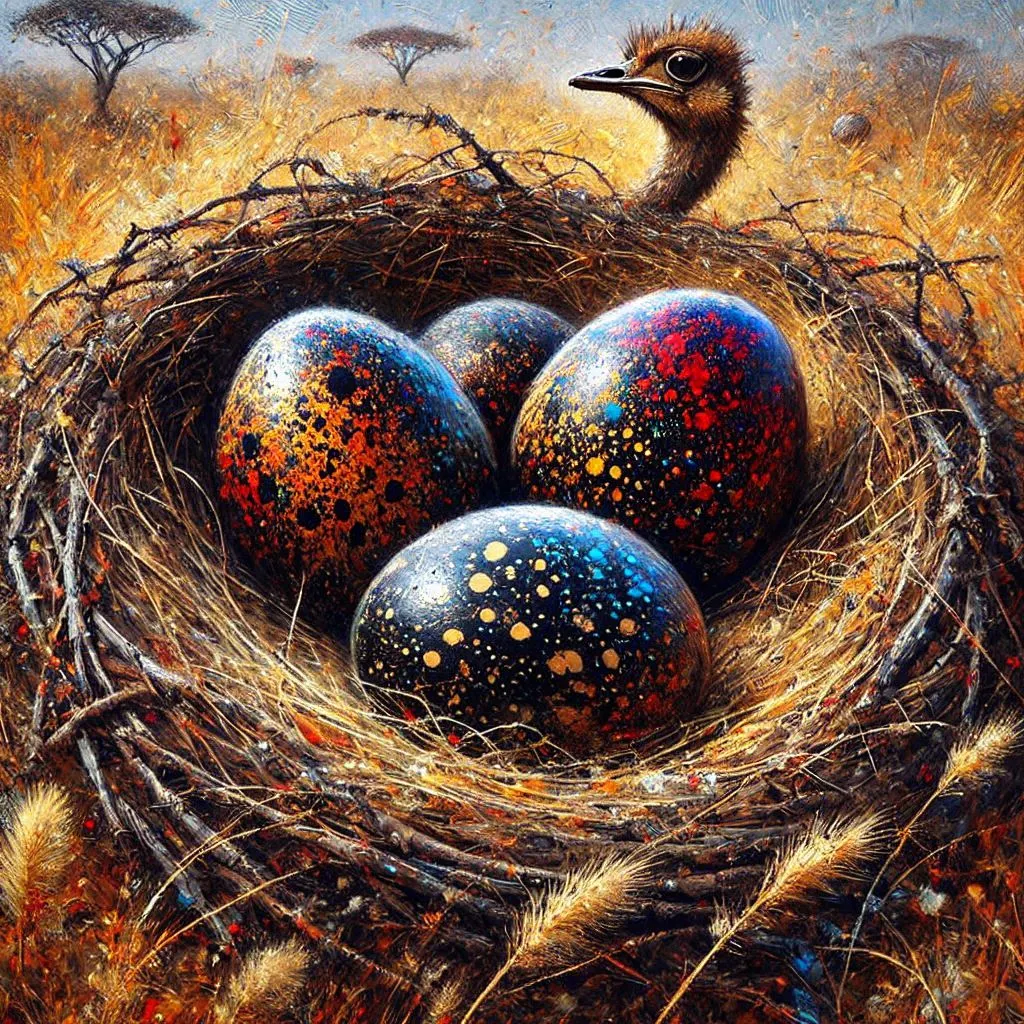Tyrdal
Anatomy
Behavior
Reproduction
Growth Rate & Stages
Diet
Distribution & Habitat
You can't expect to just sit on a tyrdal and ride it. They are stubborn birds that decide for themselves whom they allow on their backs. So don't be surprised if you get thrown off in a high arc and break every bone in your body.
Uses
Breeding
Riding tyrdal
Draft tyrdal
| Feature | Riding Tyrdal | Draft Tyrdal |
|---|---|---|
| Size | 3–4m | 3,5–4,5m |
| Weight | 400–600 kg | 900–1.500 kg |
| Speed | 90km/h | 30-40km/h |
| Endurance | High (long-distance travel) | Extremely high (steady pulling for days) |
| Legs | Long & lean | Thick & muscular |
| Claws | Hooked & sharp | Blunt, but strong |
| Temperament | Agile & alert, but temperamental | Patient & steady |
| Main use | Riding, scouting, light cavalery | Pulling, heavy labor, defense |
TLDR for my players
Level: 4
Motive: Independent, only allows trusted riders
Health: 12
Damage Inflicted: 5
Movement: Long
Modifications:
Speed Defense 5 (Extremely fast and agile)
Resists Being Tamed 6 (Requires effort to bond with a rider)
Perception 5 (Sharp vision for spotting danger far away)
Combat:
Mighty Kick: Knocks creatures prone on a failed Speed defense roll
Quick Evade: If a tyrdal is not restrained, it can use an action to move away from an attacker without triggering a free attack
Special abilities:
Picky Rider: A tyrdal chooses its rider. If someone attempts to ride without bonding first, they must roll Might or Speed (Difficulty 6) to stay on. Failure results in being thrown.
Unshakable Reflexes: Tyrdal can react before its rider in combat, acting at the start of the round unless surprised.
Interaction:
A tyrdal is stubborn, but once bonded, it is loyal for life. It uses body language (feather ruffling, posture changes) to communicate its mood. A properly trained tyrdal follows commands but still makes its own decisions in dangerous situations.







Absolutely lovely! This is magical!
Thank you so much! I'm looking forward to expanding on the Qataban and their lifestyle "soon".